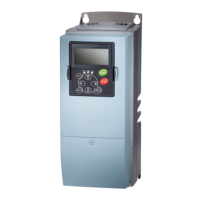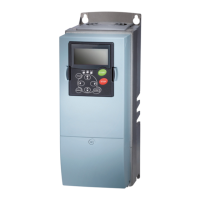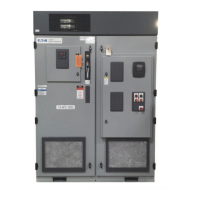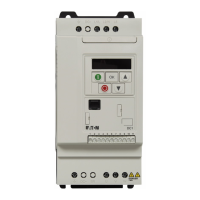SLX9000 Adjustable Frequency Drives User Manual
MN04003020E
For more information visit: www.eaton.com 8-1
January 2009
Chapter 8 — Multi-Control Application
Introduction
The Multi-Control Application of the Cutler-Hammer
®
SLX9000 drive by Eaton’s electrical
business uses direct frequency reference from the analog input 1 as a default. However, a PID
controller can be used (for example, in pump and fan applications), which offers versatile
internal measuring and adjusting functions.
The direct frequency reference can be used for the control without the PID controller and it
can be selected from the analog inputs, fieldbus, keypad, preset speeds or motor
potentiometer.
Special parameters for Pump and Fan Control (Group P2.10) can be browsed and edited after
changing the value of par 2.9.1 to 2 (Pump and fan control activated).
The PID controller reference can be selected from the analog inputs, fieldbus, PID keypad
reference 1 or by enabling the PID keypad reference 2 via digital input. The PID controller
actual value can be selected from the analog inputs, fieldbus or the actual values of the
motor. PID controller can also be used when the drive is controlled via fieldbus or the control
keypad.
● Digital inputs DIN2, DIN3, (DIN4) and optional digital inputs DIE1, DIE2, DIE3 are freely
programmable.
● Internal and optional digital/relay and analog outputs are freely programmable.
● Analog input 1 can be programmed as current input, voltage input or digital input
DIN4.
Note: If the analog input 1 has been programmed as DIN4 with parameter 2.2.6 (AI1 Signal
Range), check that the jumper selections (Figure 9-1) are correct.
Additional functions:
● The PID controller can be used from control places I/O, keypad and fieldbus
● Identification
● Programming wizard
● Sleep function
● Actual value supervision function: fully programmable; off, warning, fault
● Programmable Start/Stop and Reverse signal logic
● Reference scaling
● 2 Preset speeds
● Analog input range selection, signal scaling, inversion and filtering
● Frequency limit supervision
● Programmable start and stop functions
● DC-brake at start and stop
● Prohibit frequency area
● Programmable VHz curve and VHz optimization

